Project Name
NATURAL| Detailed Information | |||||
|---|---|---|---|---|---|
| Project Name | NATURAL | ||||
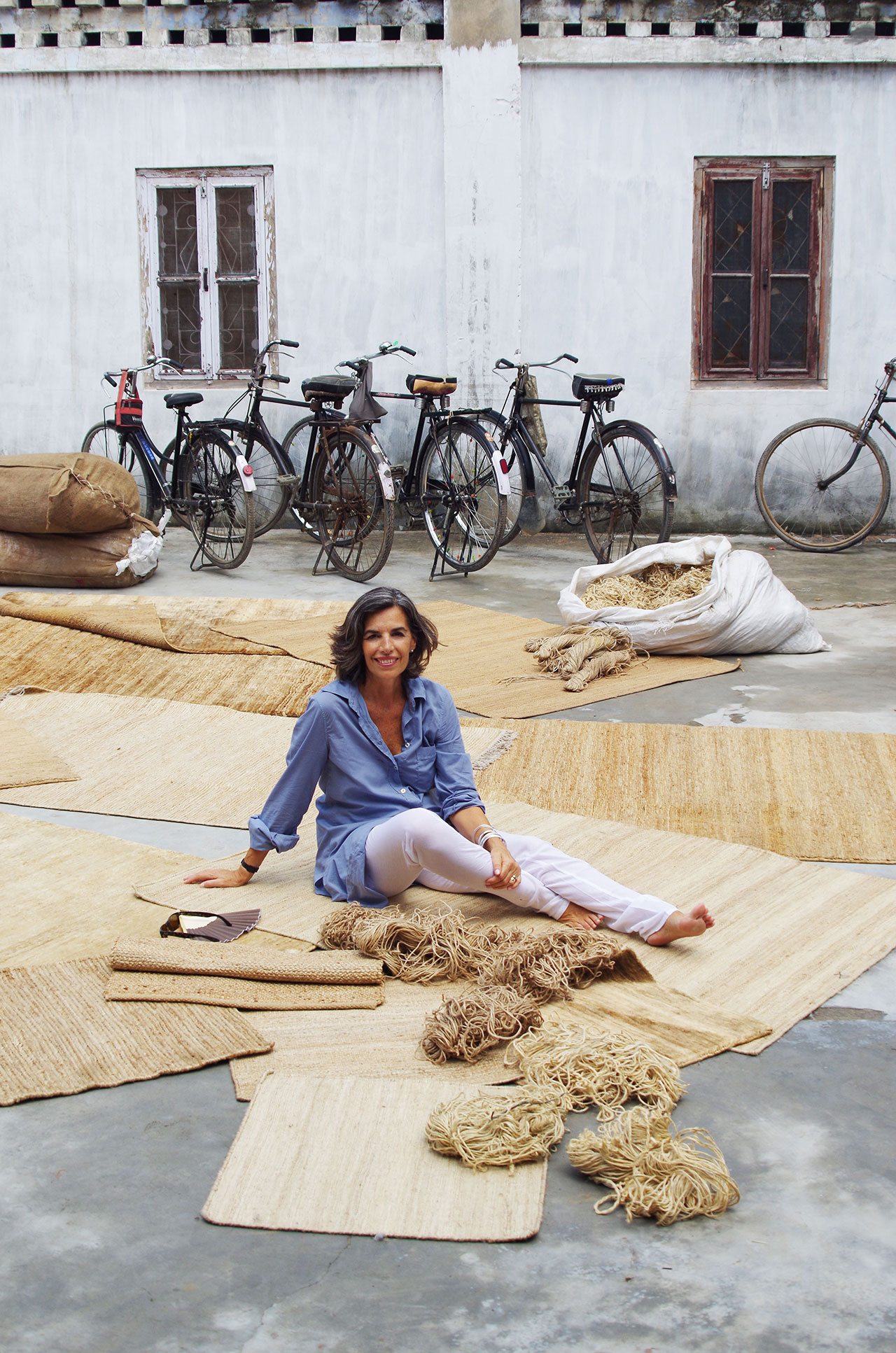
Nani Marquina, photo © Nanimarquina
Last year, I had the opportunity to visit Barcelona where I was introduced to Nani Marquina who has carved a niche in the designer-quality handmade innovative and conceptual floor coverings market. So, it came as no surprise that I was recently captivated, once again, by her simplicity and her devotion to her craft after watching the latest video-interview she conducted with my friend Maite Felices.
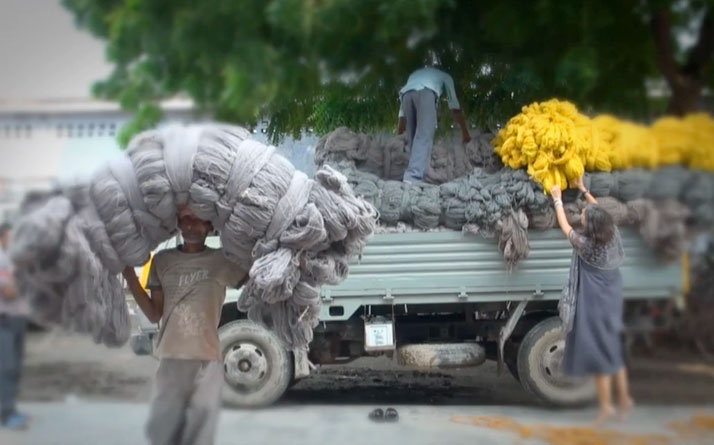
video screenshot © Nanimarquina
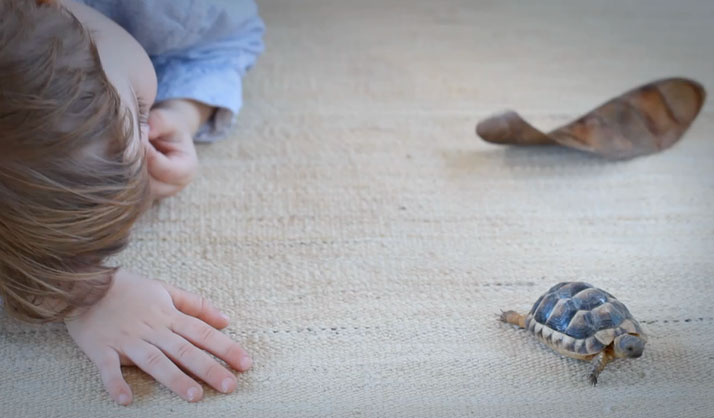
video screenshot © Nanimarquina
So without further ado, let me quickly introduce you to this Catalan lady who founded the Nanimarquina rug companyin 1987 in Barcelona and six years later embarked on her biggest adventure: relocating her production line to Northern India, where she discovered the secrets of the long-lived local methods and hence broadened her knowledge about the culture and the symbolism that rugs carry. Today, 25 years since the inception of the company, the incorporation of traditional rug-making techniques into new production methods have became a distinguishing feature and have contributed to the brand’s global recognition. And if that wasn’t enough, since then Nanimarquina has been fighting against environmental degradation and is a proud member of Care & Fair, the initiative against illegal child labour which supports individuals producing rugs in India, Nepal and Pakistan.
Natural - Nanimarquina
The Nanimarquina portfolio of rugs consists of more than 40 different collections. From ''Formosa'' which takes its name from the name that was given to the island of Taiwan by 16th-century Portuguese sailors to ''Global Warming'' where a small polar bear sits unprotected and adrift on a block of ice in the middle of an ''immense sea''. Of course the contribution of famous designers like Martí Guixé, Tord Boontje, Ron Arad and Erwan & Ronan Bouroullec, to name a few, cannot be ignored as Nani Marquina is always open to new rug stories and re-inventions. Bearing in mind the fact that her father was none other than the Catalan designer/architect Rafael Marquina who invented one of the most emblematic products in the history of Spanish design: the not drip oil/vinegar container, it becomes glaringly obvious that she is very much innovation oriented.
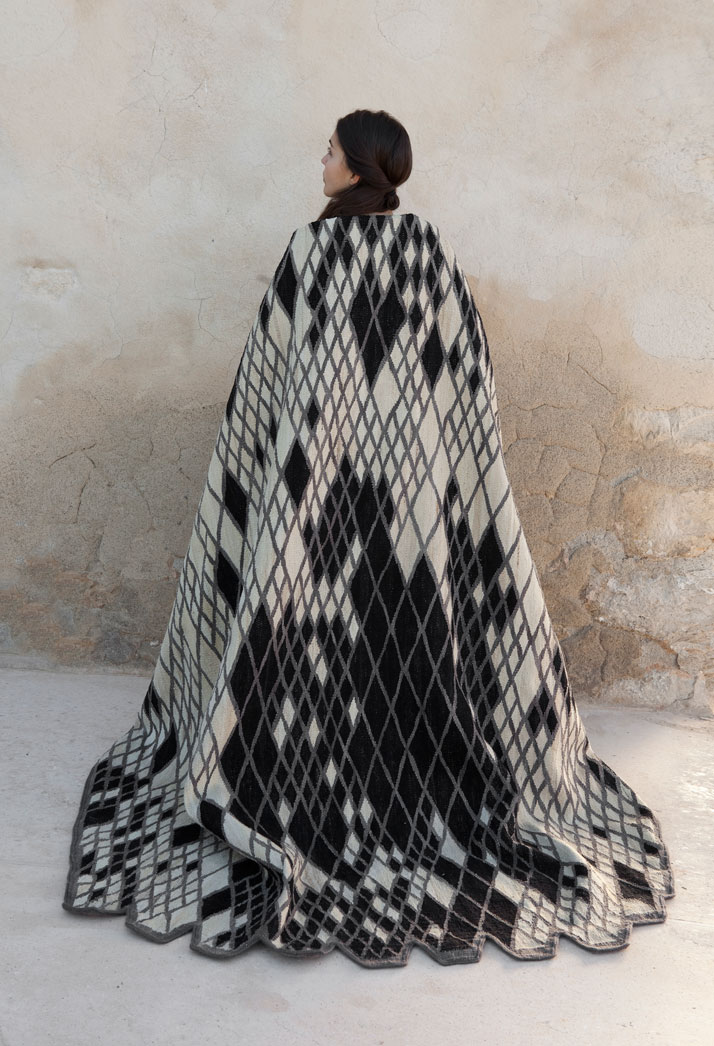
Losanges II, Design by Ronan and Erwan Bouroullec, / Losanges Collection, photo © Nanimarquina
The latest collection which will be presented during Salone del Mobile 2013 (Hall 16, Stand E33) in Milan, Italy entitled ''Natural'' consists of seven different rugs that will immerse us into the world of nature. The rugs have been produced using an exclusive selection of natural fibres that reflect the plurality that nature has to offer, including nettle, afghan wool, silk and jute combined with four different manual techniques: Dhurrie, Hand knotted,Kilim and Hand-woven sumac.
Furthermore, the new colourway of the Losanges rug in beige and grey will also be revealed this year. Designed by theBouroullec brothers, it is a reinterpretation of the traditional Persian rug, made by using the ancient kilim technique, and is made entirely of Afghan wool.
So for those of you visiting Salone del Mobile this year, here is a roundup of the nanimarquina items on show. Don’t miss the opportunity to see these wonders first hand and feel the power of nature that emanates from each and every one of them.
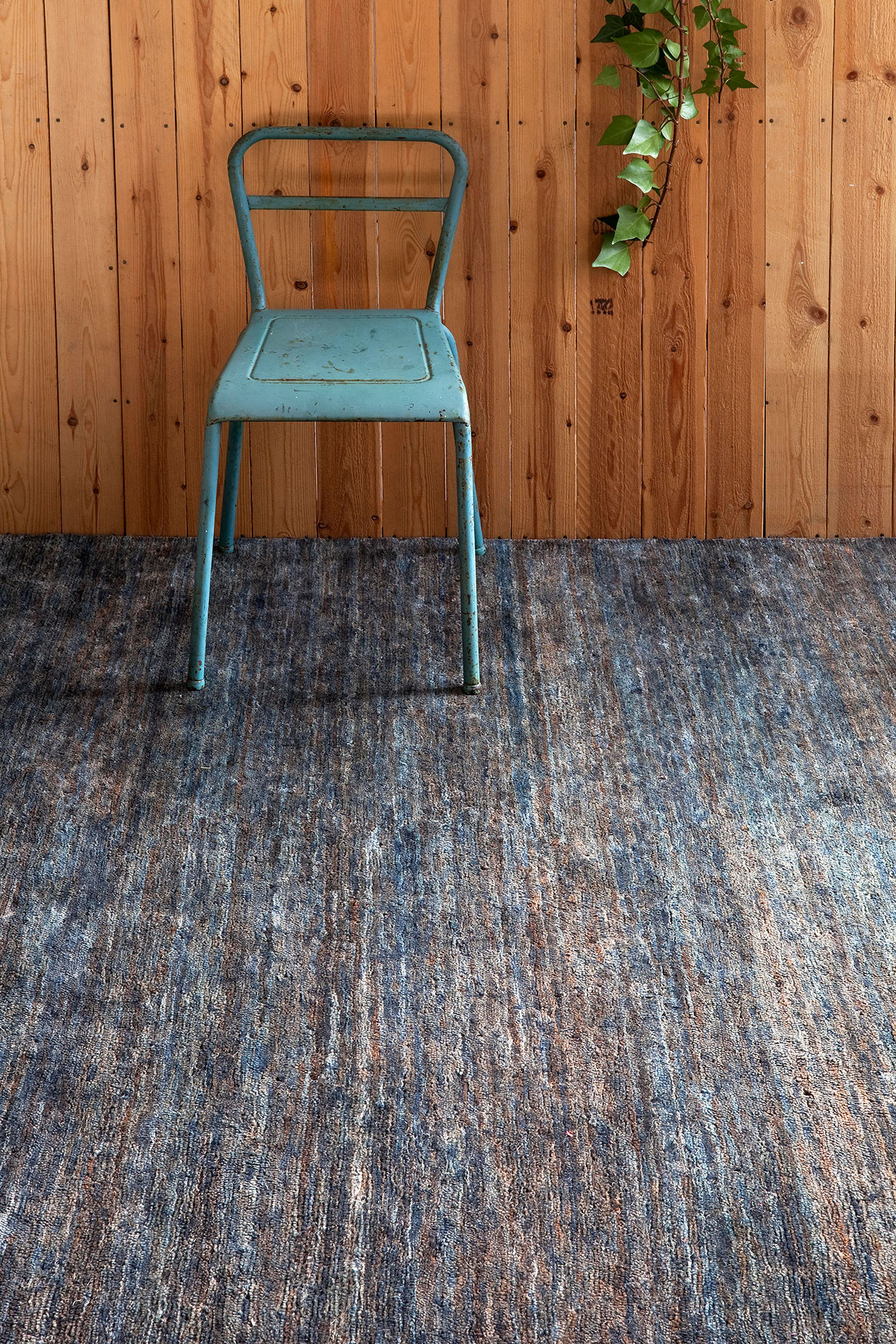
Noche (blue), / Natural Collection, photo © Nanimarquina
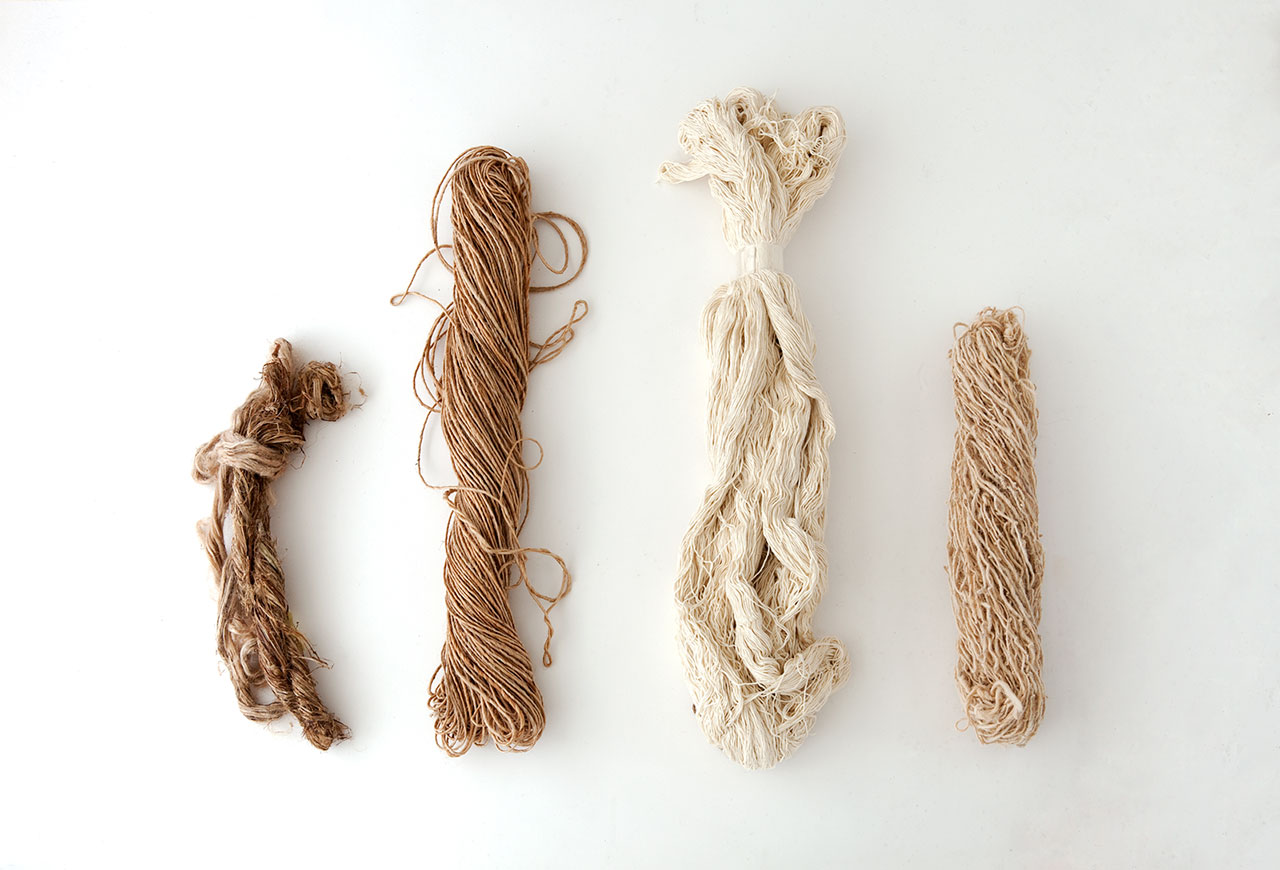
Nettle, jute, silk and afghan wool, photo © Nanimarquina
Fabrics
NETTLE
Although it is considered a “weed” botanically, nettle has several medicinal properties and is also used as a textile fibre. Grown mainly in the Himalayas (China, India and Burma), nettle fibre is greatly valued for its softness, strength and its similarity to silk. Transforming the plant into thread requires a complex firing process where the fibre is mixed with ashes and spring water.
JUTE
Known as “the Golden Fibre” because of its shine, Jute is a plant that grows in tropical regions, especially in India and Bangladesh. Some of its key properties are that it is 100% biodegradable and recyclable, so it doesn’t damage the environment; it is also one of the strongest vegetable fibres that exists with insulating and antistatic properties.
SILK
There is evidence to suggest that the first silk fabrics were produced around 3000 B.C. in ancient China. Silk is extraordinarily resistant and is considered to be the longest filament produced in nature. Its structure reflects light at different angles, giving it a natural glow that, together with its soft and smooth texture, give these carpets their unique brightness and vivid colour.
AFGHAN WOOL
Originating from Afghanistan’s native sheep, this wool fibre called Ghazni is famous for reaching lengths of up to 30cm. This exceptional length and its slightly undulating and thin structure provide a high resistance and a special softness. Like other wools, it is an elastic fibre that ages well which, combined with its beauty, makes it ideal for weaving carpets.
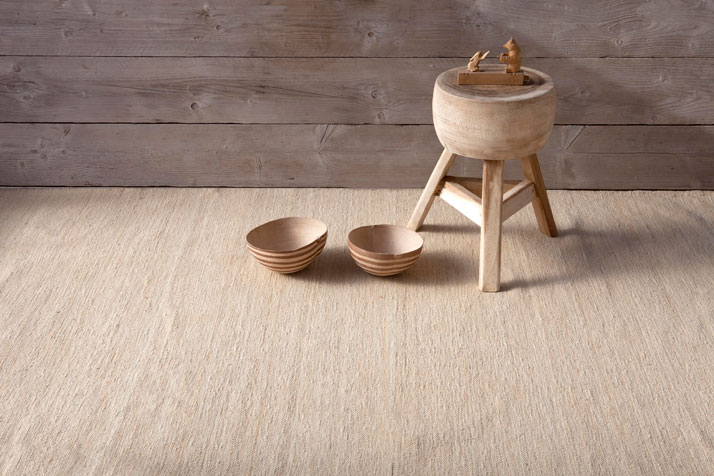
Nettle, jute, silk and afghan wool, photo © Nanimarquina
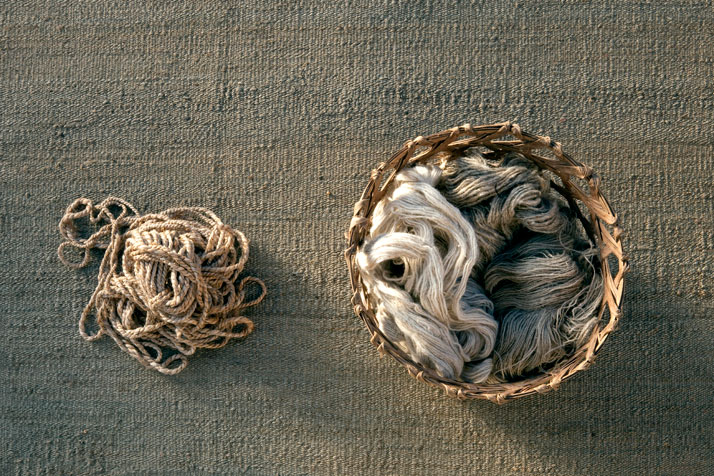
Nettle, jute, silk and afghan wool, photo © Nanimarquina
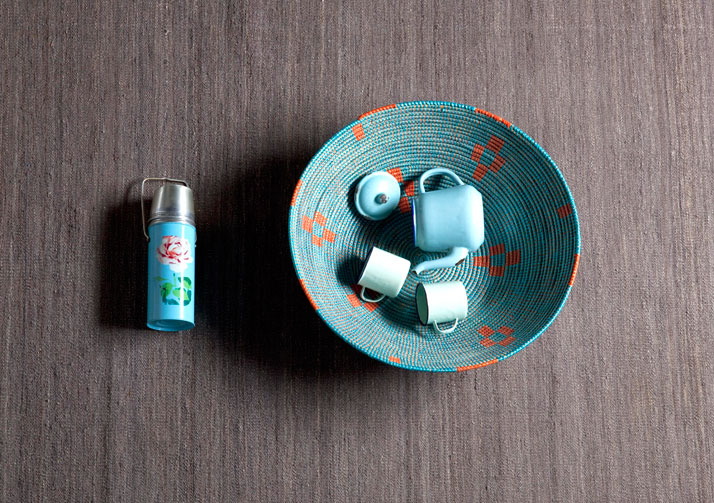
Nettle, jute, silk and afghan wool, photo © Nanimarquina
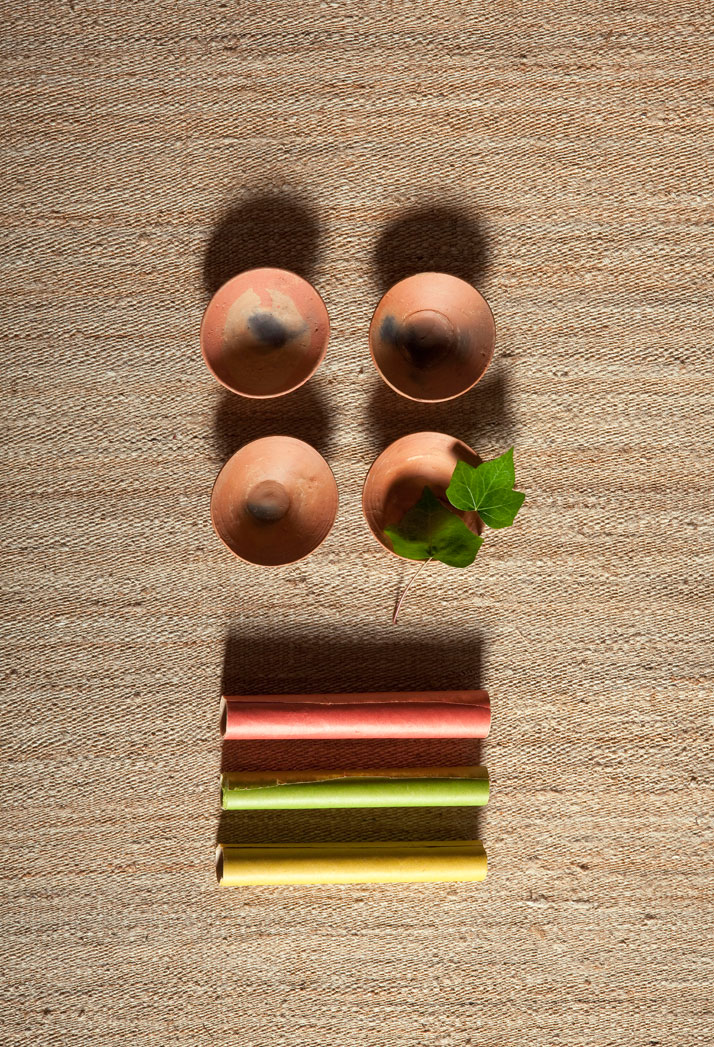
Vegetal (natural): Durrie with Jute / Natural Collection, photo © Nanimarquina
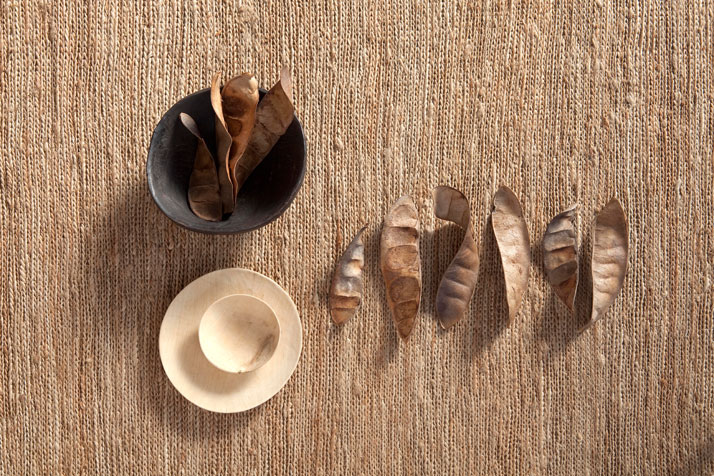
Knitted (natural): Hand woven Sumak with Jute / Natural Collection, photo © Nanimarquina
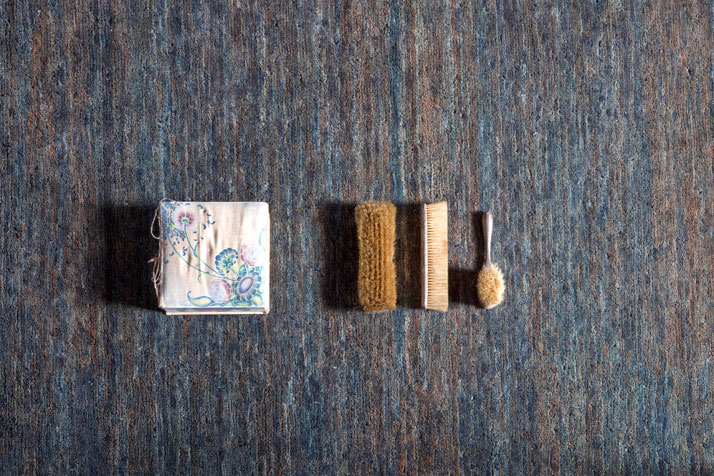
Noche (blue), / Natural Collection, photo © Nanimarquina
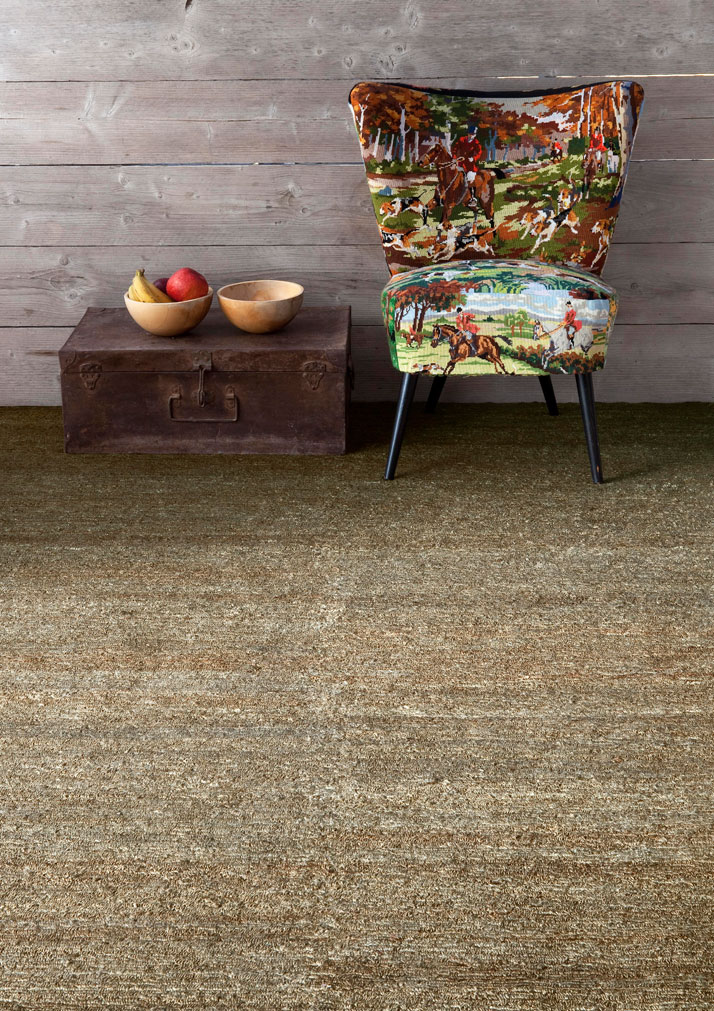
Earth (khaki): Hand knotted-loop with Jute / Natural Collection, photo © Nanimarquina















